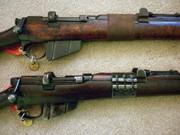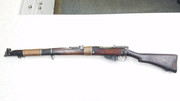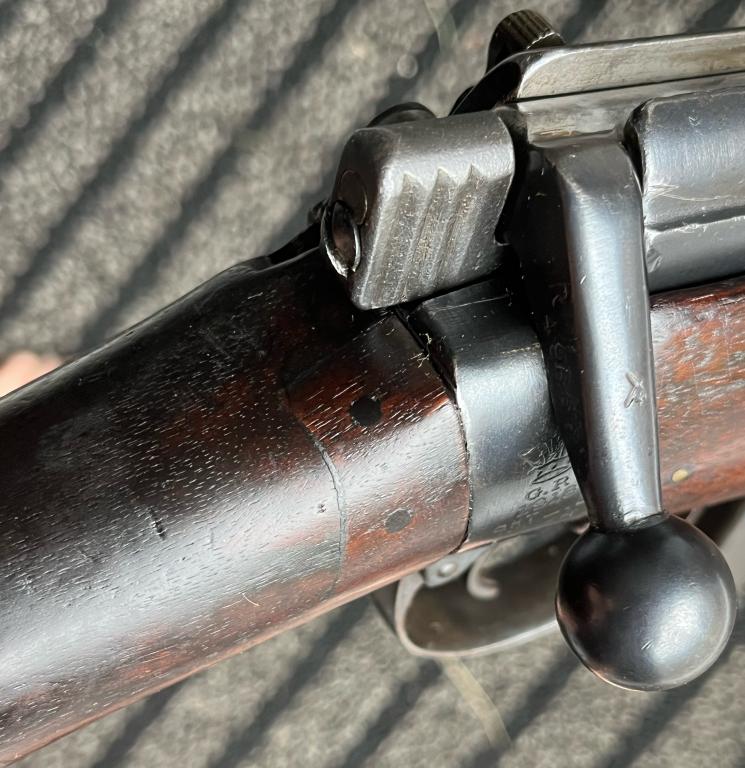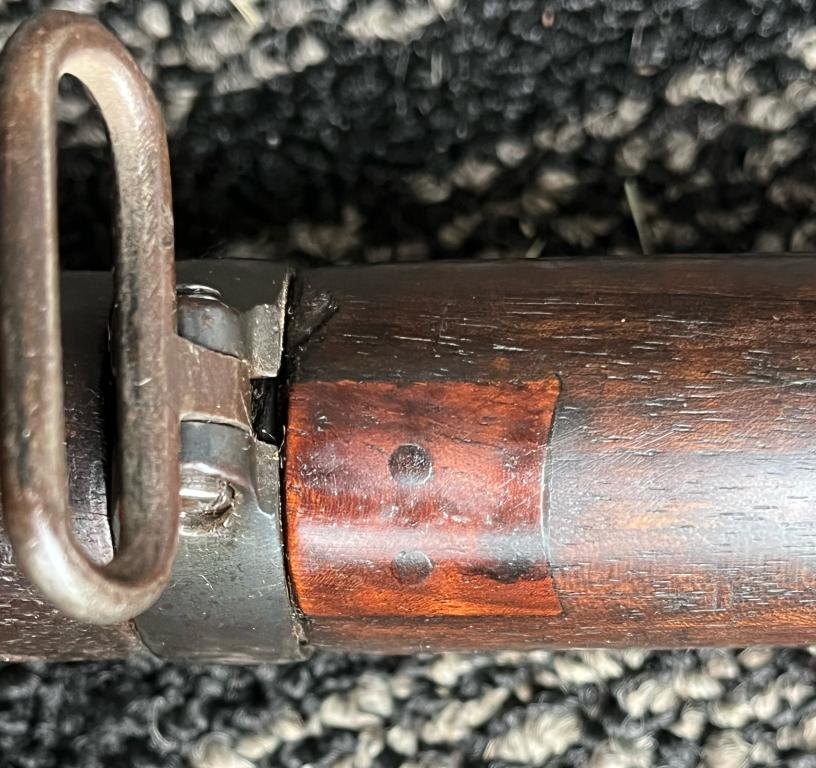-
SMLE Grenade Firing rifle questions
Hi gents,
Hoping for some insight. In another thread, I showed an SSA SMLE I bought that has great furniture, etc. but the barelled receiver was badly pitted. Today I happened upon an interesting sporterized SSA that is EY marked, sitting in an MkIII (sporterized, and not MkIII*) stock set, and with a grenade firing re-inforcing screw (not bolt). It has other issues I'll need to fix (like riveting a replacement charger guide back on - will likely rob the SSA one off my rusty action), but rust is not one of the issues with this new gun. I bought it on a whim thinking I may be able to swap it in for my badly rusted and mismatched SSA barelled action, using the other original parts of that SSA.
Then I got to thinking - this "new" SSA barelled action (essentially) I have inbound is actually a fairly rare gun. It's British service, with a cleanly marked EY knox form. EY stamp on butt. Has original steel buttplate (typical of 1918 SSA/NRF rifles). An early type of grenade firing re-inforcing screw, etc. Clearly at some point it was set up as a GF rifle, but for British service (not Indian), typical of many EY rifles in Brit service.
service, with a cleanly marked EY knox form. EY stamp on butt. Has original steel buttplate (typical of 1918 SSA/NRF rifles). An early type of grenade firing re-inforcing screw, etc. Clearly at some point it was set up as a GF rifle, but for British service (not Indian), typical of many EY rifles in Brit service.
So if I restore this sporter using the parts off the other rifle, might be an idea to restore it as a proper grenade firing rifle of the period (circa 1918).
So now the questions - the LOC approved cord and wire wrapped variants of the SMLE for grenade firing Dec. 9, 1918 originally for rifles to be used at Army Schools of Instruction according to Skennerton , but he also says wrapped EY rifles were used before that, without being in the formal LOC.
, but he also says wrapped EY rifles were used before that, without being in the formal LOC.
We are all familiar with the WW2+ GF rifles from India, and the WW2 era Australian guns are done essentially the same way as each other, but they were all made up well after WW1. Here is my example of these later versions:
guns are done essentially the same way as each other, but they were all made up well after WW1. Here is my example of these later versions:
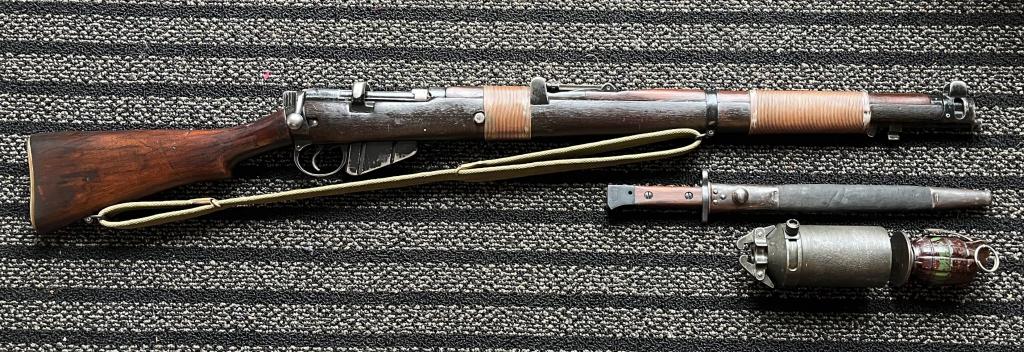
But prior to ww2, it looks like the pattern may have differed. I've seen pics of rifles wrapped with either copper wire or whip cord up by the muzzle. I've seen both cord and wire wrapped guns that are wrapped by the muzzle and behind the rear sight. With and without tacks or staples to hold the ends of the wire firmly in place. With and without solder bands on the ends of the wire wrapping, etc.
So my questions... I've not seen a re-inforcing bolt quite like is on this sporter. It looks early to me, and not very "hardware store bolt". Would this maybe from the 1918-ish era?
And if I'm going for a circa 1918 look, what should I use? cord or wire? Soldered or not? tacks, staples, or nothing? just up by the muzzle, or also behind the rear sight?
Anyone got pics/examples of a 1918-1930 era grenade firing SMLE they can share so I can gauge if embarking on this project is worth the effort?
Some pics of the inbound rifle needing restoration:
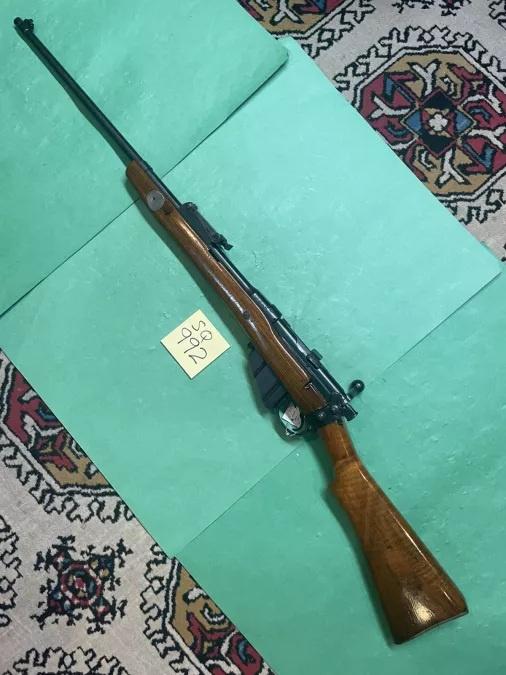
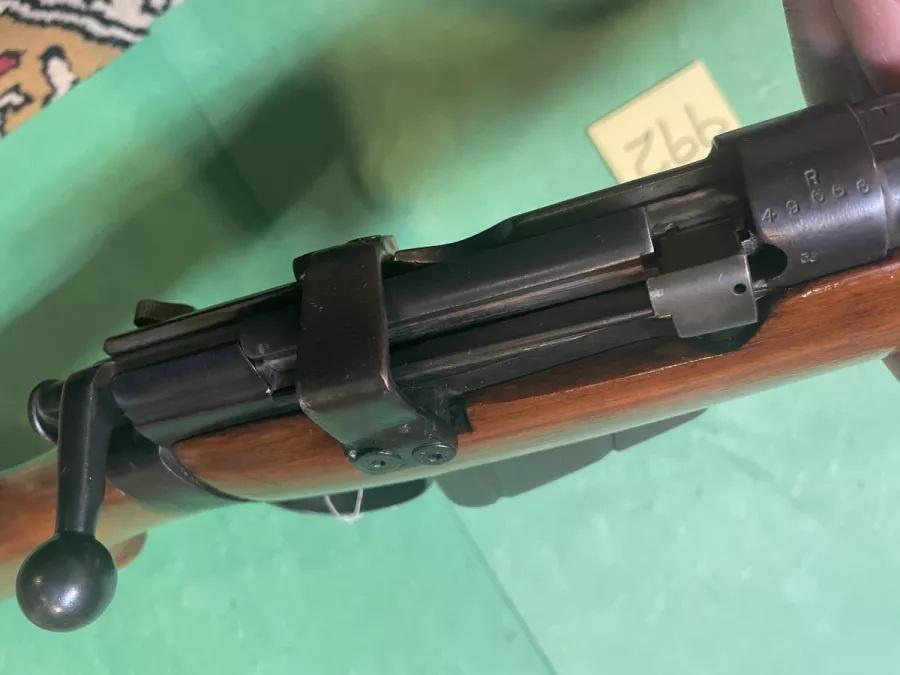

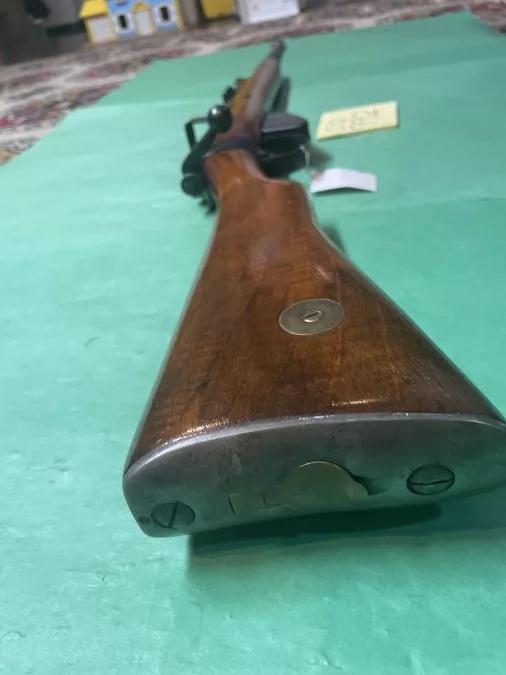
Союз нерушимый республик свободных Сплотила навеки Великая Русь. Да здравствует созданный волей народов Единый, могучий Советский Союз!
-
-
07-10-2025 07:14 PM
# ADS
Friends and Sponsors

-
Legacy Member

-
-
-
-
Legacy Member


Originally Posted by
Claven2

What I need to know about is early
UK
examples.
I guess that the difficulty comes in identifying an 'early example'
It may be an EY rifle from around WW1 that was not converted to GF until the 1960's. I'm not aware that they had any markings showing the date of conversion
In Peter Laidlers article on EY / GF rifles he states that they converted 250 of them in 1967 & who knows what the date on the rifles would have been ?
Pobably WW2 at the latest and anytime earlier.
1918 instruction for conversion from EY to GF


Last edited by Alan de Enfield; 07-11-2025 at 07:27 AM.
Mine are not the best, but they are not too bad. I can think of lots of Enfields I'd rather have but instead of constantly striving for more, sometimes it's good to be satisfied with what one has...
-
-
So a bit of an update...
Got the rifle in. It's a Canadian issue SMLE, and since I bought it in Canada , solid chance this is where it last saw service too. No import or export marks on it, no ENGLAND stamps or british commercial proof marks.
, solid chance this is where it last saw service too. No import or export marks on it, no ENGLAND stamps or british commercial proof marks.
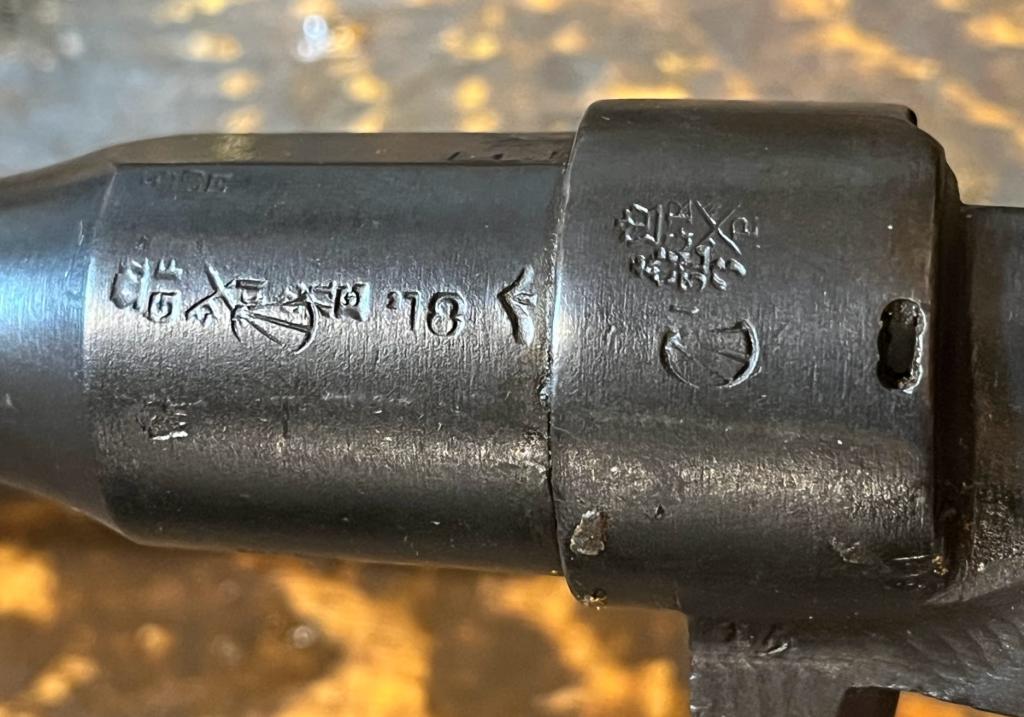

This is the reinforcing bolt I took out of the sporterized forestock. It's not a hardware store screw or bolt, looks to be purpose-made as a stock reinforcing bolt. It's blued, and the "nut" is shouldered.
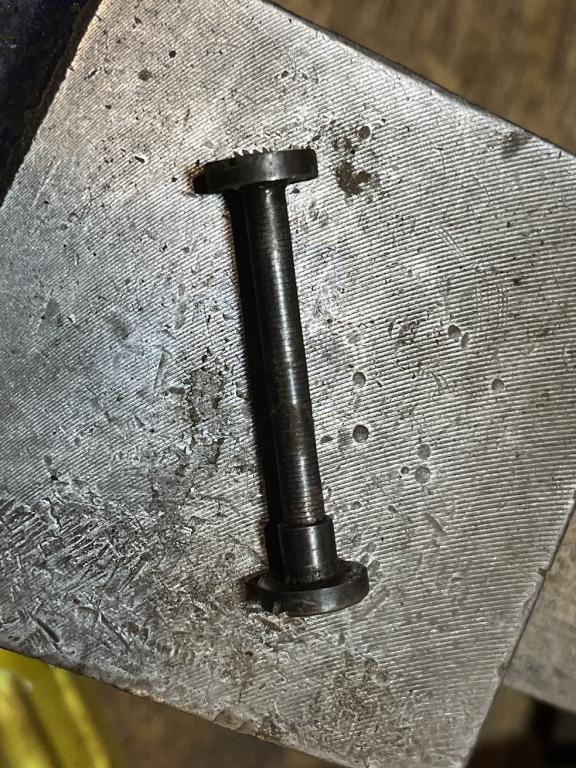
Here's a shot of the inletting in the forestock for it, which is square bottomed (i.e. it was machined to have a flat bottom, not just counter-sunk with a drill bit like bubba would do. Both sides are similar.
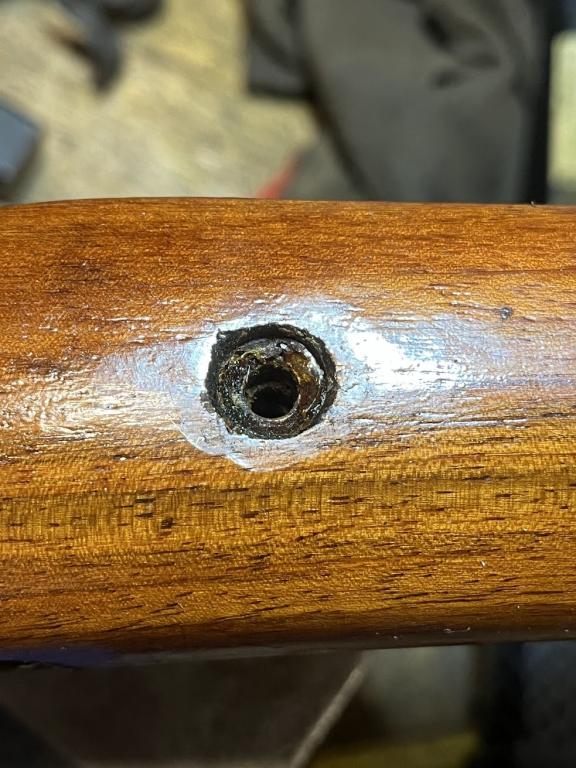
The barelled action is a bit of a conundrum, really. It is clearly a low miles gun, and had never been refinished - the inside of the receiver was still n the white from the original factory rust blue job. Bore is nice, does not close on a SAAMI NOGO. Even and good locking recess contact. The only thing I could find wrong with it is the bolt would sometimes not close - the upper lip of the bolt face would catch maybe 1 in 5 times cycling the action - a couple thou of overlap on the front of the receiver ring was all that was hanging it up, surprisingly. I looked at a half dozen other SMLEs in my rack, and the receivers all had a slight chamfer there, where the bolt head is supposed to slip under and into the front receiver ring. This one did not have that - like it missed a machining or hand finishing step at the factory. Makes me wonder if that is why it got EY stamped, as I could not find anything else wrong with it - and I have the gauges to check for the most part. I very slightly broke that edge with a small half round file, and now the gun cycles 100% reliably.
Then I set about addressing the missing charger bridge. Luckily I had another thrashed 1918 SSA barelled action that was badly pitted sitting here, so it has donated its charger bridge. Machined new rivets on the lathe, flared one end in a rivet mandrel and installed the new bridge. I build an inner anvil in the mill from some scrap stock (nothing fancy, just a correct thickness block of mild steel) to fit inside the magazine recess so I could support the receiver on an anvil, and then riveted over the rivet heads with a ball peen. Dressed flush with a file, sanded to 400, and then rust blued the bridge (it had all its finish gone) to match the rust blue finish on the rest of the receiver. I think it turned out acceptably.
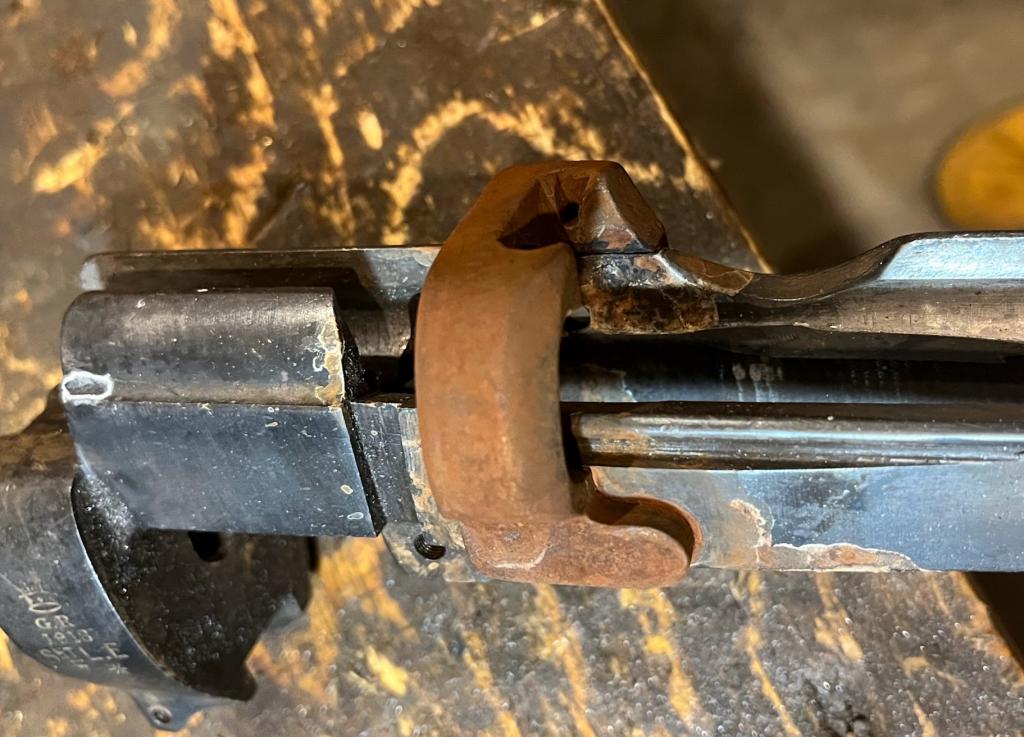
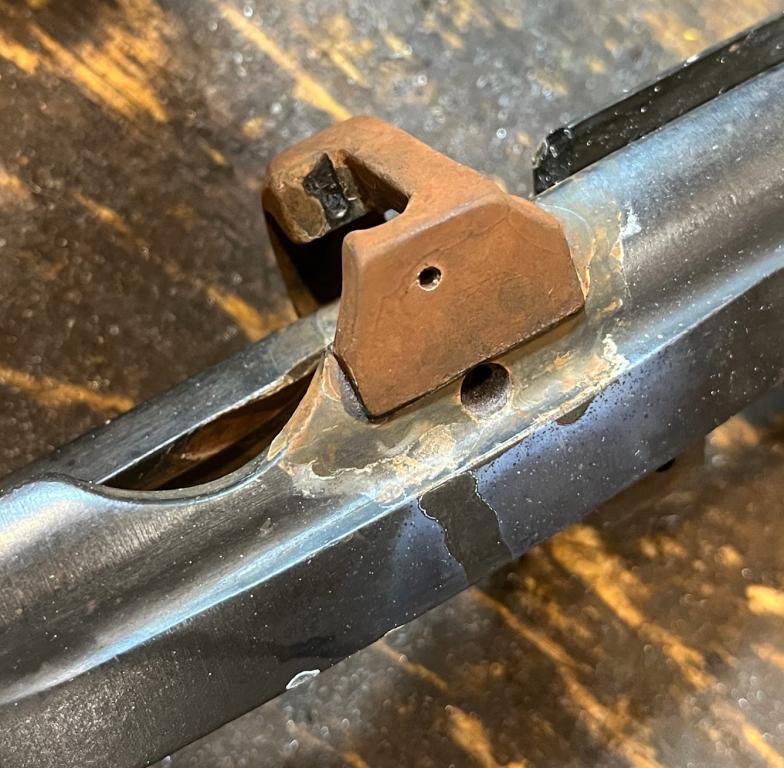
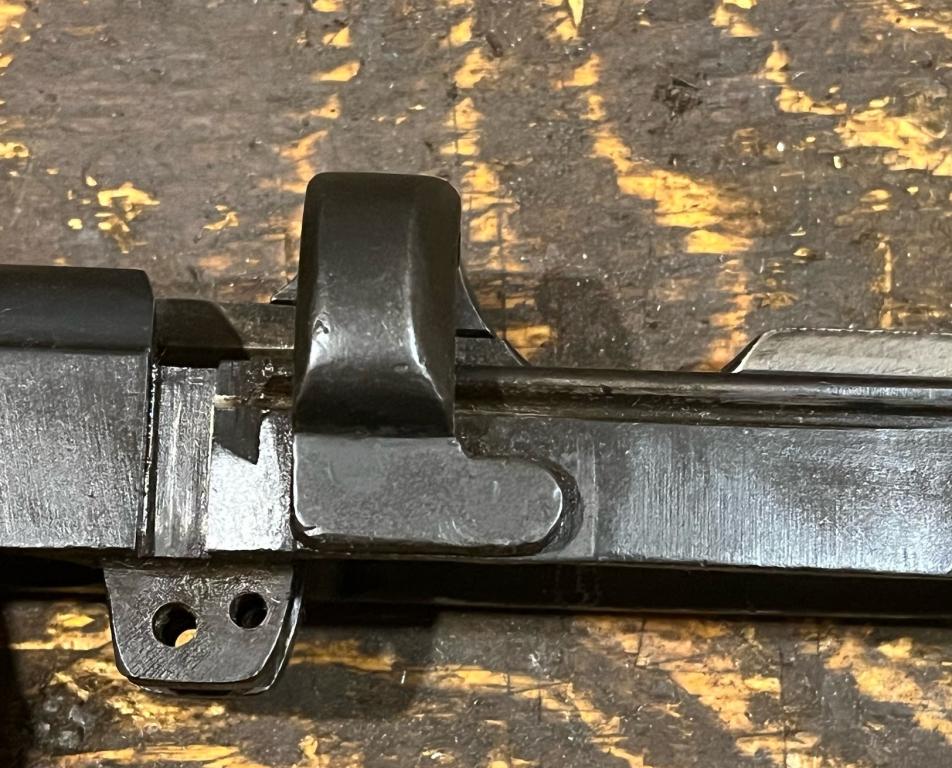
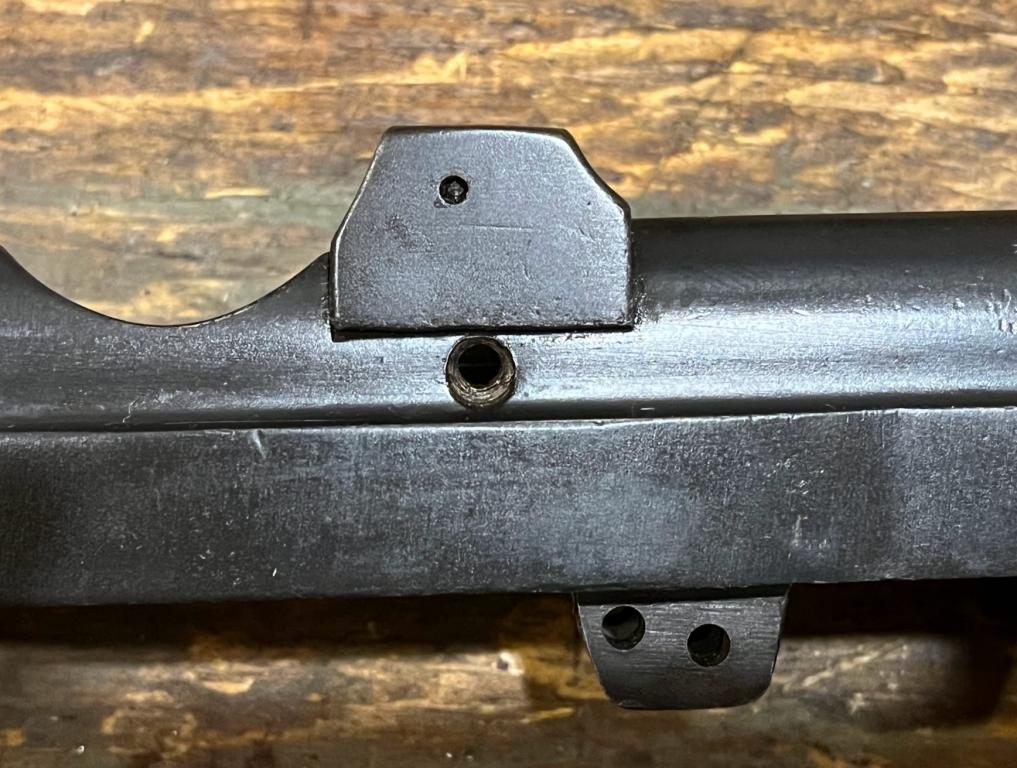
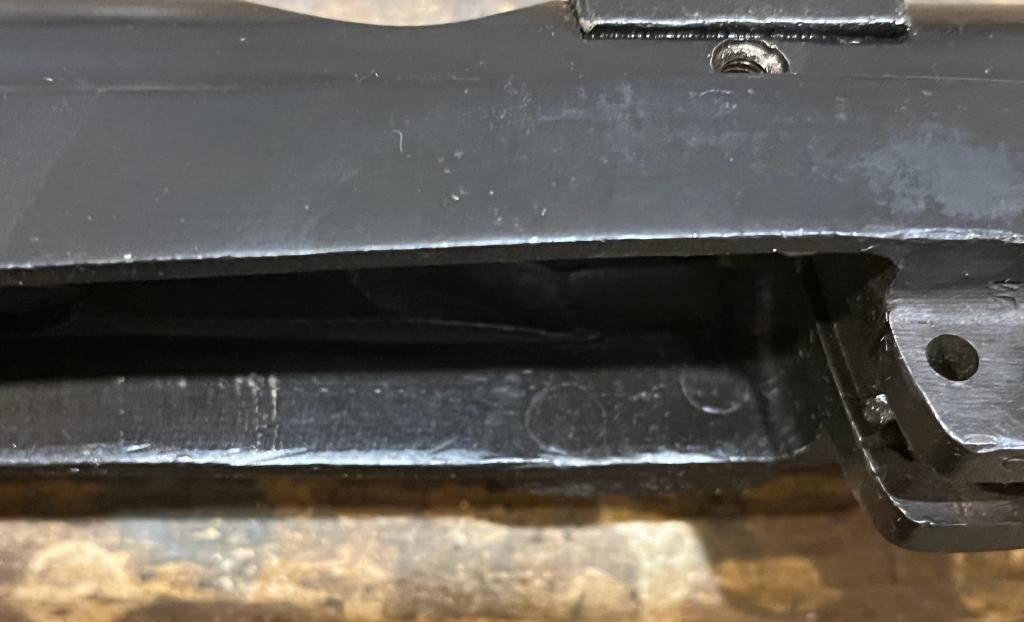
I'll re-assemble with the stock set from that ratty SSA I have here (the one that donated its receiver bridge) and post some pics later. I made a couple minor wood repairs to that stock, but otherwise it's a nice late WW1 walnut stock set. Wearing a nice steel buttplate with brass trap, SSA trigger guard, blued steel unit disk.
Now I have to decide wheather to re-install the re-inforcing bolt from the sporterized stock or not. There is no evidence the sporterized rifle was wire wrapped behind the rear sight, but I suspect it likely was up behind the nose cap, given the re-inforcing bolt. Need to decide whether I put the re-inforcing bolt in this other stock set and wrap the forestock up by the nose cap or not.
FWIW, this EY rifle was all matching in terms of what was there. Bolt, barrel, receiver, rear sight. Pretty sure it was never FTR.
Союз нерушимый республик свободных Сплотила навеки Великая Русь. Да здравствует созданный волей народов Единый, могучий Советский Союз!
-
Thank You to Claven2 For This Useful Post:
-
-
Thank You to Claven2 For This Useful Post:
-
So of interest, I checked , and apart from being longer, the stock reimforcimg bolt I took out of the original spotter is the same as a bayonet grip screw except longer. Same thread, diameter and head diameter, etc.
-
service, with a cleanly marked EY knox form. EY stamp on butt. Has original steel buttplate (typical of 1918 SSA/NRF rifles). An early type of grenade firing re-inforcing screw, etc. Clearly at some point it was set up as a GF rifle, but for British service (not Indian), typical of many EY rifles in Brit service.
, but he also says wrapped EY rifles were used before that, without being in the formal LOC.
guns are done essentially the same way as each other, but they were all made up well after WW1. Here is my example of these later versions:






















 PM
PM






